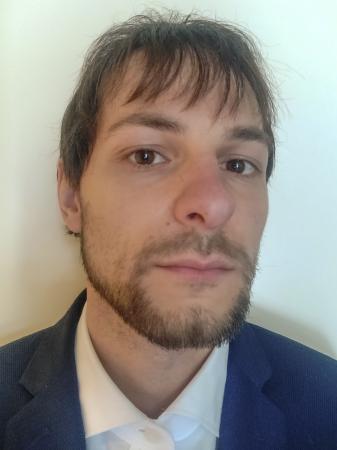
Michele Marin
Michele Marin
DIFFER
Thursday, March 11, 2021
10:00am
Virtual
Abstract: Accurate modelling of particle transport is crucial to interpret and predict tokamak experiments. The electron particle transport is fairly well understood and the density proles predicted by rst-principle-based ux-driven transport modelling are in general in good agreement with the experiments. Comparatively less attention has been directed towards ion particle transport, with full profile validation more dicult both on the experimental and on the modelling side. Recent experimental observations have inspired a detailed investigation of multi- ion plasmas. First, a set of experiments at JET varied the core isotope sources by scanning the relative contribution of peripheral gas injection and neutral beam injection. The isotope density prole was found to be weakly sensitive to the core isotope source. This is consistent with ion particle transport coecients being signicantly larger than electron particle transport coecients, interpretation in line with recent theoretical analysis in the Ion Temperature Gradient (ITG) dominated regime. The quasilinear turbulent transport model QuaLiKiz within the JINTRAC integrated modelling suite proved to be able to quantitatively reproduce the experimental observations. During a second experiment, a deuterium pellet was injected in a pure hydrogen plasma. A fast timescale for the neutron rate rise was observed and interpreted as caused by the same fast-isotope mixing eect. The modelling was able to capture the fast deuterium penetration. Lastly, the improvement in connement measured following neon seeding was investigated. These results have implications for multi-isotope core fuelling and burn control.
Bio: Michele Marin is a PhD candidate at the Dutch Institute For Fundamental Energy Research (DIFFER). He obtained a Physics MSc in December 2016 at the University of Padua, on acceleration of the edge code SOLPS-ITER with the parareal algorithm. The work was carried out at the Culham Centre for Fusion Energy (CCFE) as part of an Erasmus-Placement program. His doctoral studies have focused on rst-principle-based integrated modelling with multiple ions using the JINTRAC suite of codes and the QuaLiKiz reduced turbulent transport model, as well as high-delity validation with the GENE gyrokinetic code. During the project, experiments at JET indicating fast-isotope mixing with both gas pu and pellet fuelling were reproduced, and the physical mechanisms underlying the phenomenology was understood. The impact of neon seeding on the core transport was also studied. He has worked extensively on extrapolation of JET discharges to the upcoming DT campaign. He is scheduled to defend his PhD thesis in July 2021.